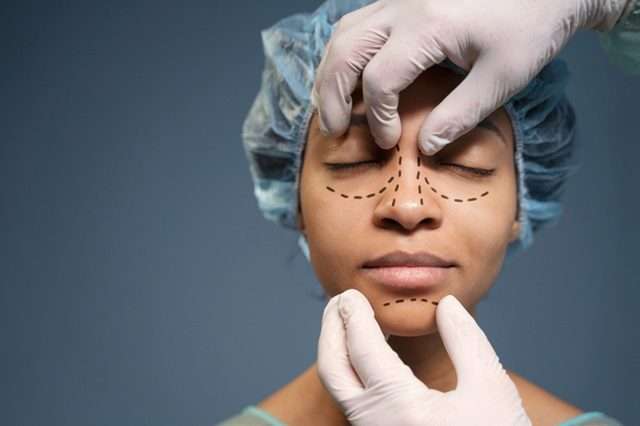Nose thread lift has grown in popularity as a non-surgical alternative to standard rhinoplasty, providing a faster recovery time and a less invasive technique for obtaining a more defined nose shape. In this post, we’ll go over the steps of a nasal thread lift procedure, including the types of anesthesia utilized, the tools and equipment used, the duration of the treatment, and the recuperation process.
Step-by-Step Guide to Nose Thread Lift Procedure
Using dissolvable threads, the nose’s tissues are lifted and contoured during a nose thread lift procedure. Usually, the process is carried out step-by-step. First, a local anesthetic is used to numb the area after the patient’s nose has been thoroughly cleaned. The next stage is to mark the locations along the nose where the threads will enter. These entrance locations are carefully selected to achieve the best lifting and contouring results.
Once the entry locations have been identified, fine threads composed of materials such as polydioxanone (PDO) are gently introduced beneath the skin. These threads serve as a scaffolding structure, raising and supporting the tissues to obtain their correct shape. In addition, the threads encourage the creation of collagen, which promotes a more long-term and natural outcome.
The surgeon will fix and modify the threads once they are in place to get the correct lift and contour. After that, the extra threads are cut so that just the required length remains under the skin. The entire procedure is painstakingly carried out, with the patient’s particular facial structure and intended outcome in mind.
Types of Anesthesia Used
To guarantee patient comfort during a nose thread lift surgery, anesthesia is essential. Local anesthetic, which numbs the precise area being treated, is used for the majority of nose thread lift procedures. This minimizes pain while enabling patients to stay conscious and awake during the process.
Sometimes, especially if the patient is nervous or the treatment is more involved, a mix of sedatives and local anesthetics is applied. Nose thread lifts, on the other hand, rarely require general anesthesia, which makes them a safer and more convenient alternative for people looking to enhance their faces without taking on the risks involved with full anesthesia.
Tools and Equipment
Specialized tools and equipment are needed for nose thread lift procedures to guarantee safety and accuracy. PDO-based fine, dissolvable threads are widely utilized because of their bio-compatibility and capacity to promote the formation of collagen. Usually, very thin needles are used for thread insertion, which minimizes discomfort and lowers the possibility of noticeable scarring.
In addition, surgeons may insert threads using blunt-tipped tubes called cannulas rather than needles. One benefit of cannulas is that they minimize tissue trauma, which lowers the possibility of bruises and swelling. Moreover, thread placement can be done with greater control and precision when using cannulas.
Procedure Duration
One of the primary advantages of a nose thread lift over traditional rhinoplasty is its short duration. The process is a convenient choice for people with hectic schedules because it usually takes 30 to 60 minutes. Even though the process is brief, the benefits start to show right away, and they get better over the next few weeks as the threads encourage the production of collagen.
Recovery Time
Compared to traditional rhinoplasty, nose thread lift recovery is typically less painful and faster. While some discomfort and swelling are possible, these side effects usually go away in a week or two. To heal properly, patients should refrain from physically demanding activities and from making too many facial movements in the early stages of their recovery.
Within a few days, patients can usually resume their regular activities, and any remaining bruises can be covered up with makeup. Because the dissolvable threads used in the procedure naturally break down over time, removal is not necessary.
Takeaway
A nose thread lift is a viable option for people who want to improve the shape and contour of their noses without the downtime and invasiveness of traditional rhinoplasty. Those thinking about going through this non-surgical cosmetic procedure can gain important insights by learning about how it works. To ensure a safe and satisfying outcome, as with any cosmetic intervention, it is important to consult with a skilled and knowledgeable professional.

